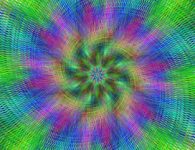
As a hobby or a profession, it’s no secret that photography is expensive. Even if you’re purchasing entry-level gear, your wallet is going to get a lot lighter. But even experienced photographers may not realize just how expensive the craft can get.
The most expensive camera ever sold was a 1923 prototype from the Leica O series (one of 25 made). It sold at the WestLicht Photographica Auction in Vienna for — wait for it — $2.96 million.
But that price is a result of the Leica being an important part of photographic history; it’s a collector’s item. How expensive can a new camera be? Brace yourself, because the value of the cameras and lenses below is still astronomical compared to what most of us are comfortable paying. Unless you’re planning on selling all your possessions and not eating for a few months, here are the most expensive cameras and lenses you probably can’t afford.
The most expensive cameras
Phase One XF IQ4 150MP Camera System – $55,000
There are plenty of broadcast and cinema cameras that eclipse the $50,000 mark, but a $55,000 still camera? That’s a bit shocking. The Phase One XF IQ4 150MP is a professional medium-format camera that’s built like a tank and comes with a 150-megapixel, back-illuminated sensor. That sensor is over twice the size of the full-frame sensor in popular mirrorless cameras like the Sony A7R IV. What all this translates to are images so sharp and clear that they look like real life.
What’s also impressive about the IQ4 is that not only is it a camera, it’s also a mini-computer. Built inside is Phase One’s in-house editing software, Capture One. You can do basic editing of the RAW files without having to step away from the camera, giving your images more bite while you’re still on set and (hopefully) making your clients happier.
Hasselblad H6D-400c MS – $48,000
The major selling point of this medium format camera — and at a cost of $47,995, it needs one — is the multi-shot capture. The multi-shot feature allows users to shoot four or six separate exposures, and each frame is then blended into a single image. With that, you get photographs with the heightened color, sharpness, and clarity you would expect from a 400-megapixel file.
When shooting standard images with the H6D-400c, users can enjoy a 100-megapixel high-resolution CMOS sensor and 15 stops of dynamic range that keeps an insane amount of detail in the highlights and shadows. And while not intended as a movie camera, it offers UltraHD 4K video recording.
Leica S (Typ 007) – $20,000
Ever so slightly bringing things back down to earth is the Leica S, but the camera body alone will still cost you $19,995. Out of the box, you get a 37.5-megapixel CMOS sensor with an ISO sensitivity of up 12,500. Innovative microlenses are incorporated into the sensor’s design, which ensures even light distribution and clarity from edge-to-edge. While still called medium format, the sensor in the S is smaller than those of the Hasselblad and Phase One cameras above, which is one reason for its “affordable” price.
The camera is also well made, featuring a dust-proof and weather-sealed magnesium alloy body. A key feature is the anti-slip rubberized cover, giving the camera more durability a refined feel in the hand. Due later in 2019, the new S3 will take things up a notch with a 64MP sensor. Cost on the S3 has not yet been revealed.
The most expensive lenses
Canon EF 1200mm f/5.6L – $120,000
This absolute beast of a super-telephoto lens came to life in 1993. To get this piece of kit in their arsenal, people had to hand over $120,000. You only purchase the lens on request and consumers were required to put down a $10,000 deposit to secure it. The amount of units made is unconfirmed, with most insiders stating it was less than 100, however. Canon has discontinued the lens, but retailers like B&H have sold the lens in used condition in the past.
Although the body is made from metal, other extremities and switches are surprisingly made from plastic. Key features of the lens included a wide rubber focus ring, a distance window with infrared index, focus range limiting option, and full autofocus speed control.
Sigma APO 200-500mm f/2.8 – $26,000

Simga makes quality gear that’s linked to the more affordable price market. But the APO 200-500 millimeter f/2.8 is an exception to the rule. This telephoto zoom lens costs $25,999, and it’s so big that it uses its own battery to support the autofocus and zoom functions. And if you were thinking of just popping out and buying one, don’t bother. You can only purchase the lens through special request, although it can be rented.
For wildlife and sports photography, this is the ultimate lens. Just make sure you also have the ultimate tripod or monopod to support it.
Nikon AF-S NIKKOR 800mm f/5.6E – $16,300

The Nikon AF-S Nikkor 800mm f/5.6 costs $16,296.95. It’s the longest lens Nikon has released and comes with an advanced optical design, weather-sealing, and impressive focus and VR (stabilization) performance. Made for situations when you just can’t get close to your subject, this lens could be great for birds and wildlife and also shows up major sporting events like the Olympics.
The F-mount lens is designed to work with Nikon’s full-frame DSLRs. It comes with two fluorite and two extra-low dispersion lens elements. This reduces chromatic aberrations and improves sharpness, clarity, and color. The design also helps to reduce the weight of the lens, although there’s only so much you can do to lighten an 800mm — it still weighs 10 pounds!
How much should you spend on a camera?
Very few people have reason to spend more than a couple thousand dollars on a camera. Plenty of professionals shoot on cameras in the $2,000 to $4,000 range, and great image quality is possible for much less than that. Check out the best mirrorless cameras and the best DSLRs for some ideas. At some point, there are diminishing returns for spending more, and the most expensive cameras don’t cost as much as they do for image quality alone. These are highly specialized tools that fit into the specific workflows of commercial photographers. For the rest of us, they’re simply impractical, but that doesn’t mean they aren’t fun to dream about.
- The best free drawing software
- The Honor 20 is a great phone, but it lives in the shadow of its siblings
- Sony’s new full-frame 600mm f/4 is a $13,000 monster of a lens
read more at https://www.digitaltrends.com by Dan Ginn
Tech









